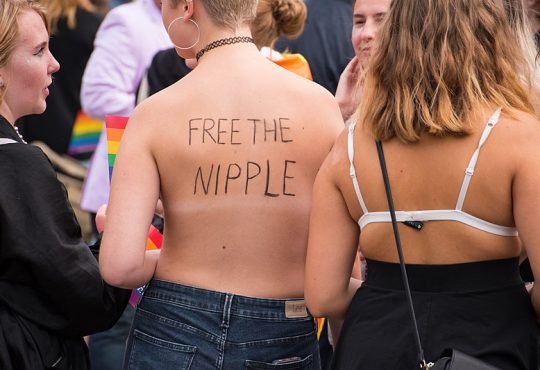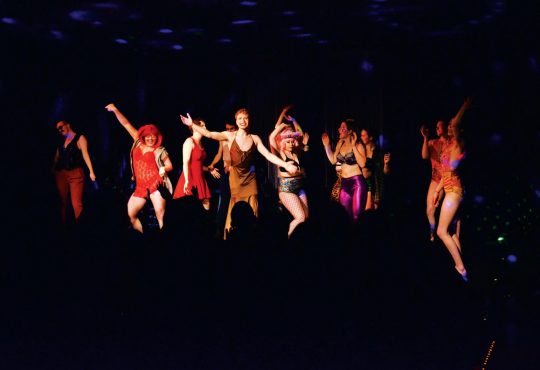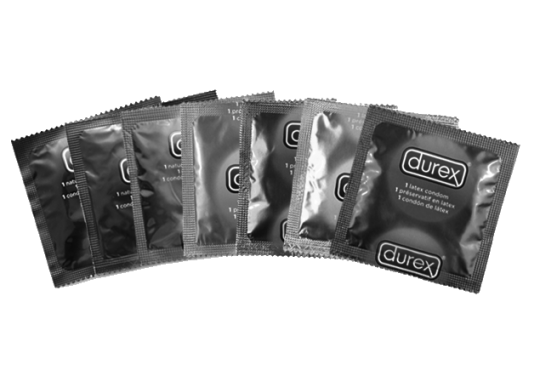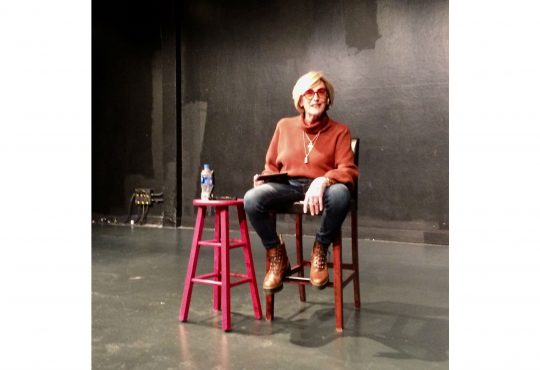In spite of the overwhelming evidence indicating the prevalence of queerness and gender non-conformity throughout the histories of all cultures, places and even many species of animals, recent history has witnessed the rise of the phrase “the white man’s disease” in communities and countries of color to describe the phenomenon of non-heteronormativity. The phrase is meant to imply the innate Caucasian nature of queerness, denying its presence anywhere but the lives of white people. Similarly, in the mind of modern America, the thought of the average gay man or a lesbian will conjure up the image of actor Brian Gallivan as “Sassy Gay Friend” or TV personality Ellen Degeneres. What then of the trans* community?
Let us first take a moment to understand the term “trans*”. A variation of the term “transsexual”, meaning a person that was born in the biological body of one sex but identifies as the other gender, “trans*” uses the asterisk as a sort of linguistic wildcard, indicating that any sort of word might follow the prefix “trans” (transman, transwoman, transperson, etc). Moreover, however, the asterisk is used to represent the wide spectrum of gender identities that a person might have, including agender, genderqueer, and bigender. As is true of all the various sections of the queer community, the gradient that is the trans* community overlaps with an enormous number of other minorities, but few face the same amount of intersectional bigotry as the colored trans* community.
In its Nation Coalition of Anti-Violence Program’s 2011 Hate Violence Report, 87% of queer murder victims were people of color, while 45 percent of reported hate murders were of transgender women. Its 2012 Hate Violence Report revealed 73 percent of queer murder victims were people of color and an even more disproportionate 53 percent of anti-queer homicide victims to be transgender women. Despite making up only 15 percent of hate crime survivors overall, queer African-Americans made up over half the population of hate murder victims. Transgender people of color reported discrimination 2.5 times as frequently as their white transgender peers.
What, then, is the source of this inordinate and disproportionate amount of discrimination faced by the colored trans* community? When interviewed over this intersectionality of minorities and of prejudice, Gender Studies program co-director and founder of the Queer Cultures class Harry Velez-Quinones cited “otherness, not-conforming, deviating, challenging heteronormative, white, Christian, capitalistic, western paradigms” as the major contributing factors. The innate “otherness” of both minorities in the eyes of America – the gender deviance of trans* folk and the ethnic deviance of colored people – predisposes their members to discrimination due to how uncomfortable they make white, heteronormative Americans feel. “Liminal subjects,” Velez-Quinones explained, “that is, folks who stand at the margins of so-called normality, are routinely the subject of animosity from the majority.”
When asked about how these communities, so often seen as separate to the point of being mutually exclusive, might better relate, Velez-Quinones pointed toward intersectionality. “Queers and colored folks should see what unites them, not what separates them. They should be critical enough to see how certain heteronormative and/or Christian ideologically supported structures conspire to bring the both down by different means.” In spite of this intersectionality of discrimination, however, queer and colored communities frequently harbor prejudice for one another, as is made clear by the phrase “the white man’s disease”. White members of the queer community may look at colored people through the lens of white cultural domination, even if those colored people are queer, while colored people may look at members of the queer community as gender deviants corrupting social norms even if those queer people are colored.
In so many ways, the fear and confusion that everyday Americans have concerning colored trans* folks is understandable. We live in a media culture inundated with Caucasians and permeated with heteronormativity, such as the hit TV show How I Met Your Mother – the tory of six attractive, upper-middle class, cisgender, heterosexual white people finding love. The concept of a person so far removed from all of these traits we take for granted is alarming in many ways. Given their gender non-conformity, colored trans* folk are unlikely to be considered attractive by common standards. Due to the amount of employment discrimination they face, they are unlikely to be more than lower middle class, if even that. A primary component of their identity is not cisgender, and even if they identify as one gender and are attracted to the other, they are not heterosexual by a heterosexual’s standards. And no matter their cultural identity, their colored skin marginalizes them so that they can never quite be at home with any other minority. But America must overcome this fear and the delusion of “the white man’s disease” if it wishes to better protect, embrace and protect such a stratified community.





